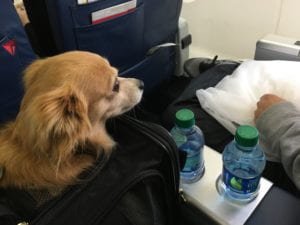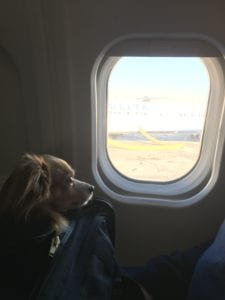I find the #BoycottUnited movement to be one of the most interesting in the social media space. It created a lasting policy change for one of the countries largest airlines, which could be considered a big win, but in reality, it was a giant Twitter storm with very little to no effect. Let’s examine the case of David Dao, United Airlines, and a bloody lip.
On a few fateful days in back in early April, United Airlines took part in what could be considered one of the worst public relations disasters to ever occur on a plane. Four passengers were randomly chosen by a computer to be deplaned in order to accommodate United staff that needed to be shifted to a work site, three complied and left the aircraft. A 69-year-old male passenger did not comply and was forcibly removed by Aviation security officers. To say the removal did not go smoothly, would be an understatement. The passenger hit his head on an armrest and began bleeding, with many smartphones recording in high definition the entire incident.
A 3-minute recap by Inside Edition
Compounding the issue where the comments of United CEO Oscar Munoz describing the incident as “passenger reaccommodation” and at one point stating the airline had nothing to apologize for. The videos of the bloody passenger quickly went viral and made thousands of evening news broadcast along with internet and traditional publisher headlines. Social media quickly embraced #BoycottUnited #BoycottUnitedAirlines and ran with it. Post included people cutting up their United credit cards, praise for other airlines, and calls for Oscar Munoz to lose his job. Many on Twitter swore they would #NeverAgain fly United, but did they follow through? Probably not, but let’s take a look.
#BoycottUnitedAirlines Just cancelled my @united beatup Plus card, and hope you'll never be overbooked again. pic.twitter.com/jBvNswT1FU
— Malbene (@Malbene) April 11, 2017
Twitter user @Malbene, whom has posted 7 total tweets since 2009 and has amassed 13 followers, had his moment of fame the day after the incident. The problem here is two-fold, while this is a United branded credit card they receive only a small portion of the income this card generates from the issuer Chase Bank. Secondly and perhaps more striking is unless this is his first year, he paid an annual fee on this card of $95 this is income already realized on the balance sheets of Chase and United in their partnership, he is not recouping this annual fee. In exchange for this annual fee he received a host of benefits, he will no longer get on United Airlines including the fact his first checked bag fee was waived.
Malbene will now be paying $25 per bag to United if he chooses to fly them, but let us assume he does follow through and never flies United again. Well, now he has wasted all of the airline miles he chose to earn by putting spending on this card. Eventually, these miles will expire and United Airlines is now able to remove them from their liabilities balance sheet, becoming realized income. So yes Malbene you got a lot of digital love, but really you didn’t do much.
Malbene’s story is far from being unique, despite all those #BoycottUnited posts, the companies income continues to rise in since the incident and passenger miles are up. The quarterly reports tell the real story, the story that matters to Oscar and his shareholders.
I chose to look at it from a financial perspective, but everyone can have their own lens and that’s the beauty of social media advocacy. Check out my post on the insular world we can create for ourselves on social media and see how someone else viewed the incident.
***Full Disclosure*** I never fly United I am a Delta Girl!

